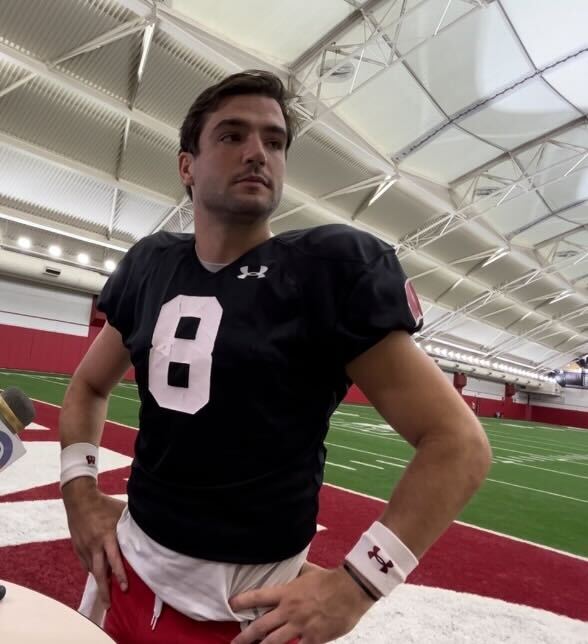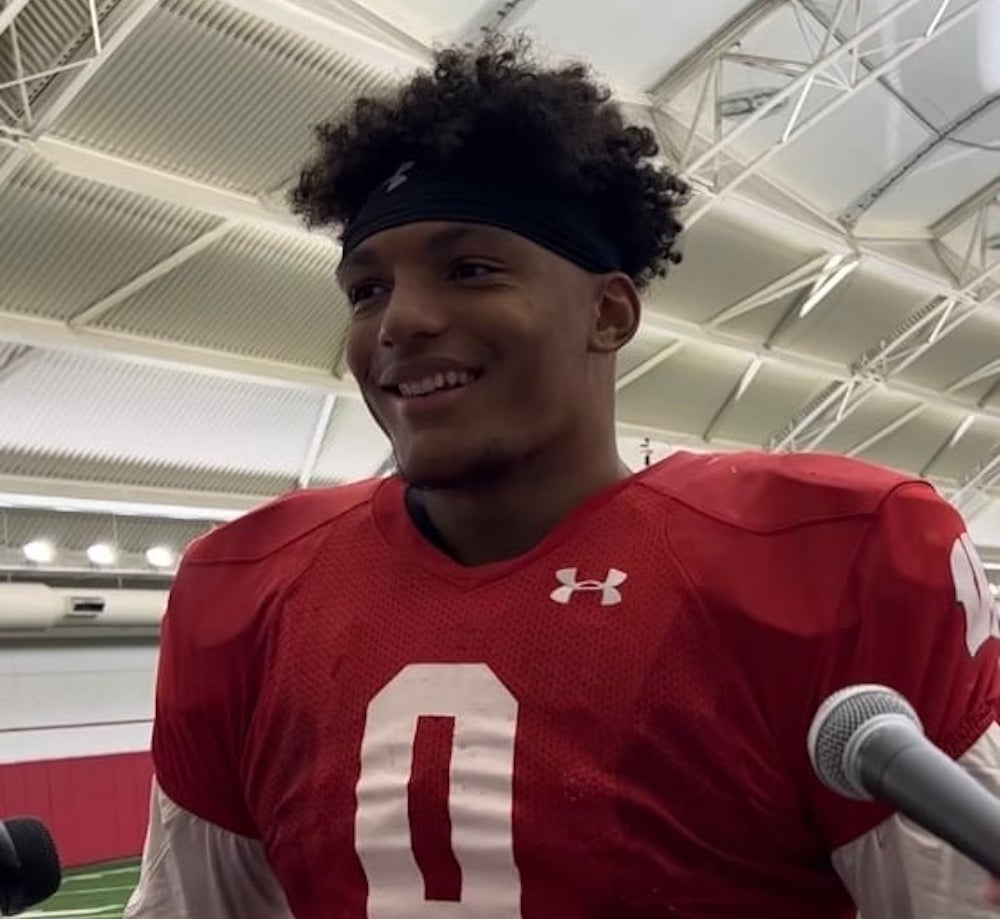At the University of Wisconsin, the football program arguably generates the most excitement of any sport throughout the campus and the greater Madison community. On any given Saturday, 80,000 people can fill the stands in one of the most electric and historic venues in not only the Big Ten but the nation.
Despite this background of glamor, there’s been a recent struggle from the student perspective. A common question pops into the minds of social media users and people who are surrounded by UW fandom. “Why can’t we fill the student section before the game?”
Photos of a half-filled student section at game time have spread all over the internet, and was a concern for first-year head coach Luke Fickell heading into the season.
“It’s a 2:30 kick so it shouldn’t be that early for them,” Fickell mentioned in a press conference before the football team’s first matchup against Buffalo University on Sept. 2. “Hoping that maybe there’s some newness to getting some things adjusted up a little bit. That’s a suggestion from our players.”
Despite this push from the fresh start with Fickell, students continue to struggle with showing up on time. Their matchup against Georgia Southern University — an 11 a.m. start time on Sept. 16 — featured a lack of timely attendance. According to Bleacher Report, it’s an issue that has existed for more than a decade.
So how can UW and game promoters rewrite this narrative?
There’s not a definitive answer, and there’s many complications that go into getting students to games on time. Calls for Camp Randall Stadium to adjust how they get students in. Eliminating the single file lines is one idea, since currently all students must enter through Gate 5 on the north side of the facility.
“When you show up right around game time, it’s really crazy trying to get into the stadium and then getting into your seat,” UW junior Gavin Calteux said. “It does take a lot of time, and if there was a faster way of letting all of the students in, the student section would fill up faster and see more of the game.”
Once students have arrived, the seating then becomes an issue, according to Calteux. A fan may be able to earn a seat closer to the action by showing up later, which isn’t appealing to the fan who showed up before kickoff.
It’s a system to help file students in an organized manner for security purposes but gives advantages to some, often based off of luck. That characteristic can become confusing to passionate and committed fans such as Calteux.
“It’s kind of frustrating when I show up early and I get placed in the middle of a section when there’s open sections, like completely open sections,” Calteux said.
Some of those late-arriving fans come from pregame activities, as the tailgating scene on campus plays a role in the attendance struggle as well.
UW sophomore Brandon Drew said tailgates sometimes determine how early or late he’ll arrive at a game. Calteux explained some students prefer the tailgating atmosphere the campus provides in comparison to the game itself.
“A lot of people at Madison have the most fun on football game days on the tailgates before, and the football isn’t the priority for a lot of people,” Calteux said. “So, they’d rather stay at the tailgate longer and be at the game for less time.”
In addition to these factors, when people are at the game, the NCAA has implemented new commercial rules that have shortened the action that takes place on the turf. One standout result is when an offense earns a first down, the clock continues to run, whereas it paused last season.
UCLA football head coach Chip Kelly voiced complaints over this rule to ESPN at halftime Sept. 3.
“These new rules are crazy,” Kelly said. “We had four drives in the first half. Hope you guys are selling a lot of commercials.”
And while Drew, like many other students, don’t necessarily recognize the timing issue that Kelly refers to, it may impact motivation in the long run.
The future is ultimately what the university and the football team can alter to attempt to motivate students to arrive on time. Giveaways such as the white bucket hat on the opening day of action was a motivator both Drew and Calteux mentioned as intriguing.
To play off of that, UW’s home schedule has been light so far — filled with non-conference matchups and a Saturday victory against Rutgers University. Future endeavors of taking on rival Iowa University and nationally ranked Ohio State University may also be crowd-drawing games for students.
The competition level in opponents will continue to increase for the football program in the near future — hopefully, an eager student body continues to turn out in support.
The post Why does Camp Randall’s student section struggle to fill on game day? appeared first on The Badger Herald.


